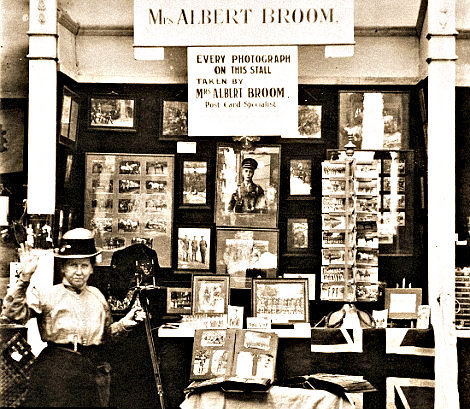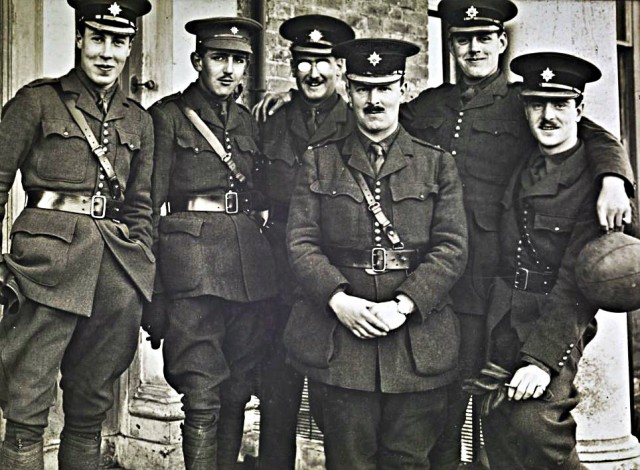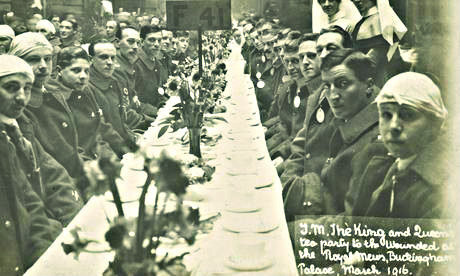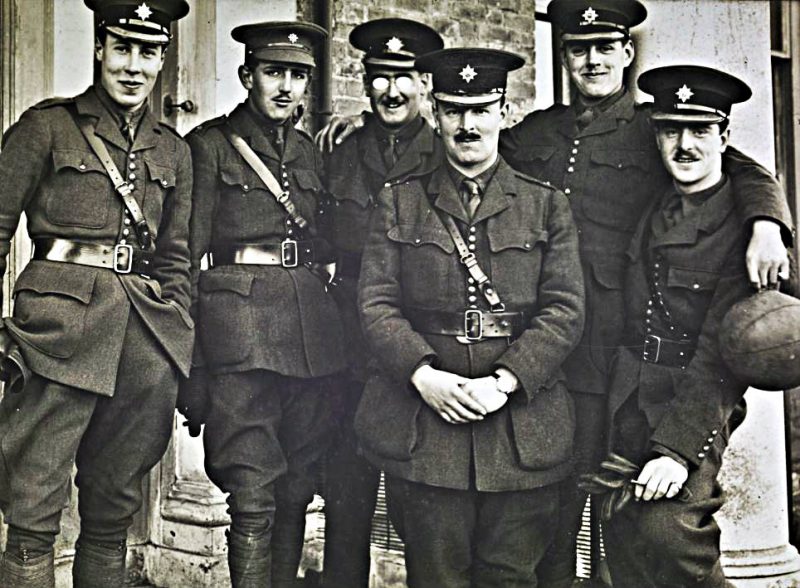Museum of London features the collection of some 2,500 photographs taken by Christina Broom, the first female press photographer of the United Kingdom. Her trove includes poignant pictures of the Great War.

Christina Broom got involved with photography late in life as she was well into her 40s when she did. A cricket accident paralyzed her husband making her the main breadwinner of the family. She took to photography riding on to the thriving business of photographic postcards. But then, she found her real calling within it.
By 1903, Christina Broom was put into the limelight for photographing the winning horse during the Derby.
Now, her collection of photographs sits on display at the Museum of London. Each of the pictures Christina Broom took – from images of university boat races, suffragette marches, royal events – tell stories of their own.
Most of all, some of the most sentimental pictures Christina Broom captured with her lenses concerned soldiers of WWI.
The picture collection of Christina Broom includes one of Jack Kipling, author Rudyard Kipling’s son, in his WWI uniform along with several comrades.

The bespectacled young man was grinning in front of the camera when the picture was taken. Jack and his father Rudyard had wanted to join the army but was turned down by the Royal Navy and the British Army because of his poor eyesight. Ultimately, he was commissioned as a Second Lieutenant in the 2nd Battalion of the Irish Guards. Rudyard Kipling’s friendship with Frederick Roberts, Colonel of the said unit played a great part on the said delegation.
But, only a year after Christina Boom took the picture, Jack Kipling died in the Battle of Loos at the very young age of 18. His death left the author wracked with guilt pouring all of it into his poem My Boy Jack.
According to Anna Sparham, the museum’s curator of photographs, in her interview with The Guardian, Christina Broom had the ability to put soldiers at ease as she took pictures of them and was very skilled at getting the shots the way she wanted them to be.
Browsing through the photos she took of the WWI soldiers and their families as they said their goodbyes and the former leaving off for the war fronts, there was no stiffness present.
Christina Broom also became somewhat of a official photographer to the household guard. Admirers of her photography skills even included the royal family. Sparham commented that she started to get exclusives, photographing the Prince of Wales and even at some occasions, was able to accompany them into London. However, she kept mum about how she got these opportunities. She was very protective of her royal connection.

The Christina Broom photo collection speaks of how this female photographer became a key spectator of some of the major moments of what life was like in London during the early years of the 20th century. She was one of the only two individuals allowed to take images of Edward VII as he laid in state.
Her pictures were in demand in her time and were used largely by publications in that era including the Evening News, Sunday Herald and the Daily Sketch. Her pictures always were always credited to Mrs. Alfred Broom.
Aside from photographs, the Christina Broom collection also features other various items like notes, press passes, and notebooks. There is even one journal which documented the well-known people she and her daughter, Winifred, who was her photograph printer, were able to meet throughout her photography career.
Museum of London plans to put the collection in digitized form as well as put up a full exhibit on the whole life and career of Christina Broom as a photographer this 2015. As of now, a small display of some of the moving pictures Broom took of soldiers leaving London for the Great War’s battle fronts can be seen in the museum starting April 4, Friday.
As Sparham puts it, the images Christina Broom captured have stories of their own but it is the photographer’s personal story of steadfastness coupled with her entrepreneurial spirit that gives them life.
